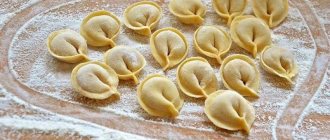When the hassle of processing the crop is over, a new question arises - where to store it all? After all, supplies are usually not limited to one or two jars; you want to stock up on delicious compotes, pickles, mushrooms and pickled vegetables for the whole winter. When the entire kitchen is already occupied, you have to urgently look for places in the apartment where there is still free space. But the question is not only the space in which all this can be placed, it is important to take into account the storage conditions so that all the work does not go to waste. It is very disappointing when salads or pickled tomatoes “salute” and require processing, and the drying becomes moldy. In order not to be upset by spoiled products, it is better to study the issue in advance and prepare conditions for preserving your preparations.
Types of home preservation
There are 4 types of canning - sweet, vegetable, meat, and fish. Vegetables and sweets are usually stored in jars, but meat and fish can be stored in the form of sausages, balyks, pates or dried carcasses. According to the processing methods used:
- freezing;
- fermentation, soaking, salting;
- pickling;
- pasteurization;
- sterilization;
- cooking;
- drying;
- vacuum packaging.
For sweet preserves, fruits and, less often, vegetables are used, from which preserves, compotes, jams, confitures, and marmalade are made. Hard berries or skins are used to make candied or dried fruits. Juicy soft fruits are suitable for juice.
There are a lot of recipes for vegetables - whole, in pieces, strips, cubes, separately, in combination with others, with oil, vinegar. Here they usually pickle, salt or ferment, sometimes pasteurize and sterilize.
Meat and fish can be smoked, dried, salted, dried, sometimes they make stew with cereals, spices or pates. Sausages, cutlets, schnitzels, beef stroganoff, saltison, brawn - there are so many recipes that some people are not even aware of the many possibilities and varieties.
On a note!
If you don’t trust store-bought canned food, you can even prepare sprats, herring or sprat yourself, which will taste better, and without the use of unhealthy monosodium glutamate.
Pantry
The layout of most apartments includes a storage room. Often they get rid of it by increasing the area of the living room or corridor, and sometimes they make a wardrobe. The right solution would be to install sections or shelves where jars will be stored. Apartments in new buildings are often equipped with two bathrooms, but if one is enough for a family, then the other can be allocated for storage.
Where and how to store homemade preparations in the apartment
Storage issues are more relevant for those who live in a city apartment and do not have the opportunity to place jars in the cellar. Most often, a storage room, balconies or hallways are used for this. But if this is not possible or there are too many blanks, you can equip other rooms using creativity and interesting solutions. Each apartment has many corners, ledges, niches, just free walls that are suitable for arranging a storage system, the main thing is to look at it from the other side, to approach the solution of the issue by thinking and weighing all the pros and cons.
If there is little or no balcony
Not everyone likes storing cans on the balcony; in some cases, it is too small or not suitable at all. Sometimes it is attached to the living room, sports equipment is placed there, a workplace or a relaxation corner is made there, so there is no room left for conservation. And in large families, where they are accustomed to making serious supplies, there may not be enough space, so it is always useful to have alternative or additional options.
Under the window
Some apartments, most often Khrushchev-era apartments, have shelves with doors that are located directly under the window in the kitchen and have a through ventilated hole to maintain a temperature there lower than in the room. An ideal place for vegetables and those canned goods that can be consumed in the near future. In other layouts, even if this is not provided for in the plan, you can equip similar shelves yourself, even install a small fan in them.
Pantry
This is the most popular place, which is specially designated for storage and is often already equipped with shelves. It is good because it is located closer to the entrance, the temperature there is slightly lower than in the open rooms in the back of the apartment. In addition, little light enters it, there is no direct sunlight and no heating effect in hot weather. In modern layouts, it happens that this room is missing or is being redesigned to increase the area of the kitchen or corridor. In such cases, you will have to look for other opportunities, using free space.
Mezzanine
Previously, they were in all apartments, located between the kitchen and the corridor. Now this is not a mandatory attribute at all, but if necessary, you can build them yourself. However, it is not necessary to do them in the kitchen; a similar principle of using the space above the front door is possible in the hallway and even in the bedrooms. The only difference will be what you store there.
Tambours in front of the front door
There was a period when they began to actively install additional doors on staircase landings, which made it possible to add several meters of usable space in front of the entrance. People began to put things there that were rarely used and took up space in living rooms. If you have good relations with your neighbors and don’t have a lot of unnecessary things, you can also put canned goods there. In some modern homes, such spaces are already provided for in the plan; they can also be used not only for storing outerwear and seasonal shoes, but also for tasty preparations.
Cabinets, shelves
You can use ready-made cabinets or assemble custom-made furniture specifically for these needs. Low ones can be placed on top, on legs - use the gap between the floor. Shelving or built-in cabinets made to order can be provided based on your needs, adjusting the height, depth, and number of shelves. It is not necessary to make them heavy with doors; if there is not much space, it is better to make many shelves the width of the jar and cover them with a curtain. Long corridors, niches, recesses, walls between rooms are perfect for placing them.
On a note!
In square rooms where there are no narrow corridors, but there is a large hallway, you can separate a corner and equip it for shelving. The principle is similar to a dressing room, only instead of things, preservation will be placed there.
Other hidden places
These options are suitable for those who have absolutely no other options left or have no desire to set aside a permanent place or arrange it specially. But such placement will look less aesthetically pleasing and is more suitable for temporary supplies that will be eaten in the near future. So, where else can you put cans of preserves:
- Under the bed;
- under the table;
- behind a closet or sofa;
- along the walls on the floor.
On the balcony or loggia
It all depends on the size of the balcony or loggia and the volume of workpieces. Do not forget that only glassed, insulated rooms are suitable for storage, otherwise, with the onset of sub-zero temperatures, the glass container will burst, making all your efforts in vain. If there is not much conservation, you can get by with cabinets located below - from the floor to the windows, and place indoor plants on top. On a loggia, it is convenient to fully use one or both side walls, making shelves or a cabinet at full height. So that they do not clutter up the space too much and are protected from direct sunlight, it is better to make them closed.
On a note!
Furniture for balconies and loggias must be strong, resistant to low temperatures and humidity. Even if this is an insulated room, it is important to provide for different situations, taking this into account when choosing materials. It is not advisable to use old furniture that has been removed without modification, because the location of the shelves and their width will be rather inconvenient for placing and removing cans.
Lumber room
In the closet you can store not only your winter wardrobe and rarely used items. Install a rack in it or think over a system of shelves - and the issue of storing preserved food will disappear on its own. At the same time, you’ll put things in order!
When arranging a place to store workpieces in a closet, you should be guided by the following principles: reliability of fastenings, ease of use and rationality in dividing the space. The latter is especially important, since usually the closet is used not only for seaming, but also for many other things. Finding a shelf for the “extra” five or six jars of jam is much easier than finding a place for a vacuum cleaner or a children’s scooter.
- How to get rid of mice forever in your house, apartment and country house
What to do if there are mice in the house? Find out now.
How and for how long to store preserved food in an apartment
When it comes to storing food products that can spoil due to improper conditions, causing harm to health, it is important not only to find a free one, but also to ensure the desired temperature, humidity, and the absence of direct sunlight. You should also remember that not all canned goods require the same conditions, so even if you have one large room dedicated to this, it is worth taking this difference into account. In one space, this can be solved by placing it on different levels - some on the lower shelves, some on the upper ones. If the shelves are deep, some blanks are placed closer to the outer wall, others to the center of the room. With constant access to light, it may be better for some shelving to make curtains or doors to prevent light from falling on them.
To take into account the difference in temperature conditions and optimally place it, you can analyze the necessary conditions, organizing storage in accordance with the indicators from the table:
| Processing method | Temperature (t°C) | Humidity level (%) | How long can you store (months) |
| Peeing | -2 to +2 | 90-93 | 9-12 |
| Marination with pasteurization | from 0 to +15 | 75 | 24 |
| Marination without pasteurization | from 0 to +2 | 9 | 9-10 |
| Drying fruits | up to +30 | 7 | 12 |
| Drying vegetables | up to +20 | 70 | 12 |
| Pasteurization of fruit jams, preserves, sauces, syrups | up to +20 | 70 | 12 |
| Preserves, jams without pasteurization | from +10 to +20 | 75 | 9-10 |
| Pickling | -2 to +1 | 90 | 2-4 |
Canned meat
Before long-term storage, canned meat must be cooled and then checked again for leaks. After sterilization, they are placed in cold water or left in the air. A few hours after cooling, the jars are placed in a room with a temperature of +10-15°C. If it is not possible to maintain such a temperature regime, then it is worth considering that the shelf life is significantly reduced, and regular inspection is extremely important to monitor changes. Under appropriate conditions, canned meat can be stored for up to 3-5 years, depending on the type and method of preparation.
Worth knowing!
If the lids become cloudy or bulging, such products must be disposed of; eating them can result in botulism infection.
Salted, pickled, soaked vegetables and fruits
They are usually salted, fermented, and soaked in wooden barrels. Recipes are very different; for small volumes of homemade pickles, other containers are also provided, but the classic recipe involves the use of oak barrels. The shelf life depends on the temperature; the lower it is, the longer it can be stored. Under conditions from -4 to -1°C, it is about 9 months; if the temperature rises above +10°C, then the period is reduced to 3 months.
Pickled vegetables
It is optimal to preserve vegetables throughout the year, because initially this method was used so that the harvested crop could be consumed in the winter, when they were not available fresh. In rare cases, when the year was fruitful and the reserves turned out to be larger than usual, they can be consumed for another 1-2 years. A danger during longer storage can be posed by dishes with metal lids, which oxidize over time and become covered with rust.
Compotes and preserves
Here, a lot depends on the amount of sugar; the more there is, the longer they are preserved. The method and time of processing are also important. You should pay close attention to jams and compotes made from berries with seeds. In such products, hydrocyanic acid is formed over time, which poses a health hazard. It is not recommended to leave such preservation for longer than 2 years.
Mushrooms
You can leave mushroom caviar and pickled mushrooms for a long time. But it is better to store them in the refrigerator or a cool place, periodically monitoring for unwanted changes. It is very dangerous to roll up salted mushrooms, as the risk of developing botulinum toxin, which causes botulism, increases. It is better to leave them under plastic covers at a temperature of no more than +6°C; they tolerate frost well and can be stored on the balcony.
Dried mushrooms are also good for long-term preservation, but it is important to pack them correctly so that they do not become moldy or damp. For them, the level of humidity, ventilation, and distance from products with strong odors are important. You can store them in tightly closed glass and metal jars or bags that allow air to pass through.
On a note!
Before packaging in a glass container, pour a few drops of vodka into the lid, set it on fire and immediately screw it tightly. This method preserves even poorly dried mushrooms and prevents the formation of mold.
Dried vegetables and fruits
The main task when drying fruits and vegetables is to maintain temperature conditions and ventilation. In such cases, the risk of losing the crop due to spoilage during storage is significantly reduced. If, during the drying process, the fruits were tightly adjacent to each other, or were in a damp or poorly ventilated room, there is a risk of mold formation and the appearance of bugs. To prevent this from happening, the finished drying is placed in glass containers with airtight lids. It is also acceptable to use plastic containers, paper bags or fabric bags. Polyethylene is less commonly used. Comfortable conditions - from 0 to +10°C. It is important to periodically review inventory for any unwanted changes in color, feel, or smell. If spoiled pieces are found, they must be thrown away and the container washed before putting it back.
Hallway
The dimensions of domestic hallways are rarely of a palace scale, but even in such cramped conditions it is usually possible to install at least a small closet.
If you are the happy owner of a two- or three-door “storage system for winter things,” then with a rational approach to the distribution of free space, finding a shelf or two for cans will not be difficult.
Before storing cans, make sure there is no mold and, if necessary, treat the cabinet with antifungal treatment.
- Mold and mildew in a wooden house: what causes it and how to get rid of it
What to do if a wooden house begins to gradually collapse and rot?
How to store after opening the jar
Much depends on the quantity and method of preparation. But be sure to place the home-canned food in the refrigerator after opening. At the same time, if a tin lid was used during sterilization, it should be replaced with a nylon one. In any case, it is worth remembering that it is important not to drain the brine, oil or remove fat completely, since they allow the product to be preserved longer. Food left without these components, even at sub-zero temperatures, will weather and spoil much faster.
Mushrooms should be consumed within 4 days, fish - 2-4 days, meat - about a week. Large jars of tomatoes, cucumbers, cabbage can last up to 2 weeks, the main thing is to ensure that mold does not appear inside. Compotes - 2-3 days, preserves and preserves can last a couple of weeks, but this will depend on the amount of sugar in them and the temperature inside the refrigerator.
Loggia
A loggia can be an excellent option for placing seams. It differs from a balcony in that at least two of its sides are adjacent to the walls of the house or neighboring loggias. And yet, not every one of them is suitable for storing workpieces.
Firstly, the room temperature should not fall below 0°C. Otherwise, the contents of the jars will simply freeze.
Secondly, the loggia should not be too damp. If you use it to dry clothes, try to ventilate the room as often as possible to reduce the humidity level.
Thirdly, lockers must be installed on the loggia. If the jars are left in the sun, their contents will deteriorate very quickly.
Before you start insulating the loggia, you should definitely study the technical side of the issue. It may turn out that the design features of the room do not allow the installation of heavy window structures on the loggia.
- 10 ideas on how to arrange places to store seams on a loggia or balcony
Ideas available to everyone that you can implement this year!
Adviсe
Don't seal up more than you can eat; long-term storage will most likely turn into a waste of time when it turns out that you have to throw away what you prepared so carefully. Balance your appetites and take into account past experience - if you know that your family does not like peppers or do not eat jams, use other products or try new recipes. By the way, if you want to try something new, don’t do it on an industrial scale right away, you may not like the result, and your time and energy will already be wasted.
You should not store canned food in the following places:
- toilet;
- under the sink near the trash can;
- near a stove or radiators;
- under the bath;
- passages where there is a risk of tripping and hitting it;
- hard-to-reach niches or cabinets, when there is a risk of dropping the jar when taking it out.
Mezzanine
Previously, mezzanines, i.e. wall cabinets and shelves under the ceiling could be found in almost every apartment. However, the fashion for expanding space took its toll, and people began to gradually get rid of these structures, citing the fact that the mezzanines “ate” the entire height, and it was extremely inconvenient to get things from them.
Meanwhile, it is the mezzanines that can become a help for storing seams. The main thing is that the design is reliable enough to accommodate the number of cans you need.
Rack with shelves
Many shelves on one plane are an ideal solution for storing jars of goodies. The rack can be placed anywhere (most often on the balcony).
The rack can be purchased ready-made, but for craftsmen it will not be difficult to make it with your own hands. When choosing a rack, you need to pay attention to the following points:
- material of manufacture (durable, reliable, it is best if the rack is made of metal);
- quality of fastenings (plastic is absolutely not suitable);
- length and width (selected based on where the rack will be installed);
- height of the structure (the most convenient option is 1.8 m).
Attention: Canned foods deteriorate when exposed to sunlight. When placing cans on open shelves, it is necessary to provide protection for them. As an option, you can use decorative curtains. Selected to match the overall style of the room, they will help to successfully fit the rack into the interior. Roller blinds fixed on a rack can also provide good protection from light.
Secluded place
For those who are of the opinion that there should not be a lot of preparations (so a few jars just in case) will appreciate the idea of storing them in different secluded places.
This way you can highlight the bottom shelf of a regular cabinet (or even a whole section).
It is also convenient to hide twists in hidden spaces of kitchen units, sofas and armchairs (under the seats). Most often, this is where all unnecessary rubbish is stored. Placing jars with twists there is a good way to rationally use the hidden space of furniture, a reason to throw away unnecessary trash.
Under the kitchen unit
Under any kitchen unit there is an unoccupied space, covered with a decorative panel. It can be easily removed to provide additional storage space.
This is an excellent option for pickles, since it is always dark and cool under the kitchen unit. In addition, the preservation will not get in the way, and if necessary, it can be quickly taken out.
The only negative is the small height of the free space, which is why it can only accommodate compact containers.
Kitchen
The first and most obvious option for placing prepared food products is, of course, the kitchen, where cabinets become the main storage space. However, before you start filling all the free space with glass jars, you should do some preparation.
First, check the strength of the shelves to make sure that they can withstand the entire load of tomato and cucumber “responsibility” that has fallen on them. For wall cabinets, it would be a good idea to check the fastenings.
Secondly, measure the height of the shelves and evaluate how rational their current arrangement is. Some of them may need to be raised slightly to allow you to place the jars higher.
People who have been canning products for more than one year often complain that storing products on shelves is not very convenient. Cabinets with drawers will help make it easier to find the right cans. However, the use of such mechanisms imposes a certain inconvenience, since their design is poorly suited for storing large cans, which it may simply not support.
If you prefer to use jars with a capacity of no more than 1 liter for preparing food, then in this case you simply cannot do without roll-out boxes.
Never place cans of seaming in cabinets that are located near the stove or radiator!











